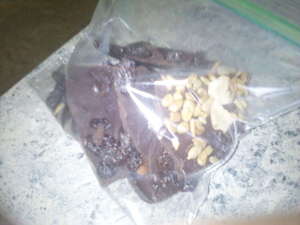Summer brings a plethora of fresh fruits to our table, including the much-loved blueberry. Whether you eat them alone or add a sprinkling to your breakfast cereal, there’s no denying the special charm of blueberries. While you enjoy them this summer, think how wonderful it would be to enjoy that blueberry sweetness months later in the bitter cold of winter. Dehydrating blueberries can bring you that pleasure any time you want it.
While blueberries can be dried in the sun or in a room, it requires consistent temperatures of 90 degrees and low humidity to accomplish. The quickest, most reliable and easiest way to dry blueberries is with an electric dehydrator. Some models have temperature settings, making it easier for you to determine how long to dehydrate a specific food. Older models often do not have any temperature controls. In this case you will need to rely on your sense of sight and touch to determine when the blueberries are dry enough for storage.
For larger quantities of blueberries, you can refer to weight as a reference for judging dryness. After rinsing and culling out any fruit that is already overripe or otherwise damaged, weigh the blueberries. Starting with 10 lbs for example, you multiply the weight by the water content percentage of blueberries which is 83% (10 x .83 = 8.3 pounds of water). In order to reach an acceptable level of dehydration, most fruits need 80% of water removed. In the case of blueberries, multiply the weight of the water by the percent of water to be removed (8.3 x .80 = 6.64 pounds of water to be removed). What all this means is that if you start with 10 lbs of blueberries and subtract the weight of the water that should be removed when you’re done, your dried berries should weigh 3.36 lbs.
For smaller quantities of blueberries, you can simply cut a piece in half and check for moisture – none should be visible. The blueberry should be chewy and flexible.
After you’ve sorted and weighed the berries you will need to “check” them. Blueberries have a waxy coating that must be removed or “checked” by dipping them in boiling water for 30 seconds. Skipping this step will result in dried blueberries with a puffy appearance.
Next spread the blueberries on your dehydrator trays. Try to keep them from touching so they don’t stick together. Dry them at 130-135 degrees. The amount of time can vary depending on circumstances such as the efficiency of your dehydrator & how much humidity is in the air where you are doing this. Start checking on your blueberries between 4 to 6 hours. If you are not sure, check by cutting a piece open and look for moisture. Also notice how pliable it is. If you are doing a large batch, you may want to use the weight method described above to see if enough water has been removed. In most cases this shouldn’t take longer than 12 to 14 hours.
Sometimes dehydrated foods stick to the tray. I have found that turning the tray upside over the base of the dehydrator unit allows me to loosen them more easily. I simply use a butter knife or fork and pass it between the ridges of the tray, pushing the berries off and into the base tray below. My hands are less sticky and I don’t drop any of the blueberries.
Mason jars with tight-fitting lids or vacuum-sealed freezer bags work best for storage. Keep the container in a cool, dry, dark place. You should be able to enjoy your blueberries for up to six months. Anytime you want the taste of blueberries you can add them to your recipe or rehydrate them by barely covering them with boiling water. Wait ten minutes and serve or add to your favorite dish. Pancakes, muffins, and oatmeal will have that summer taste with your dehydrated blueberries.



